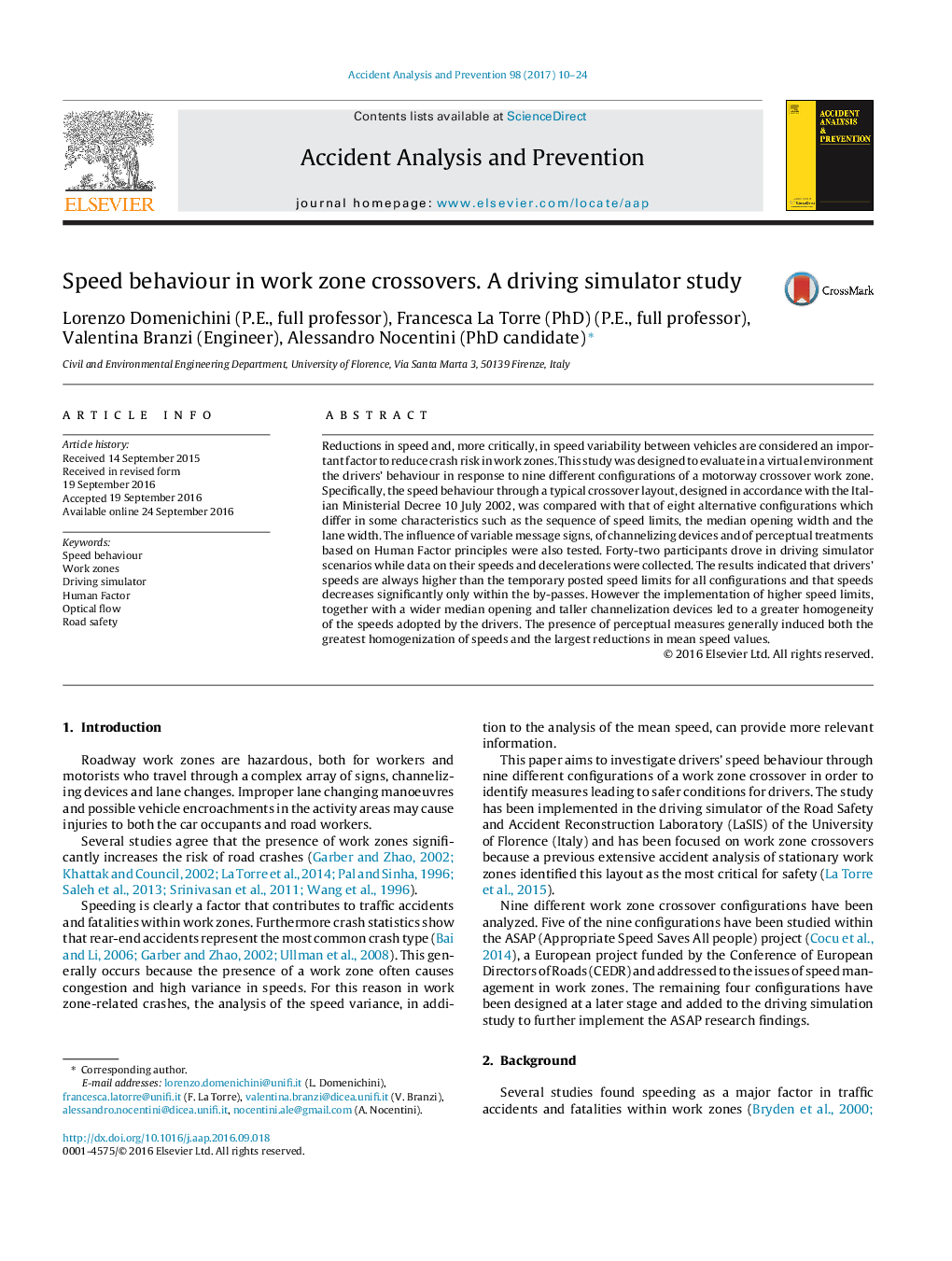| Article ID | Journal | Published Year | Pages | File Type |
|---|---|---|---|---|
| 4978812 | Accident Analysis & Prevention | 2017 | 15 Pages |
â¢This driving simulator study investigated nine different work zone configurations.â¢The effects of different speed management strategies have been analyzed.â¢The speed behaviour is not influenced by the temporary speed limits.â¢A significant speed reduction is obtained by introducing perceptual treatments.â¢The perceptual treatments induced the greatest homogenization of speeds.
Reductions in speed and, more critically, in speed variability between vehicles are considered an important factor to reduce crash risk in work zones. This study was designed to evaluate in a virtual environment the drivers' behaviour in response to nine different configurations of a motorway crossover work zone. Specifically, the speed behaviour through a typical crossover layout, designed in accordance with the Italian Ministerial Decree 10 July 2002, was compared with that of eight alternative configurations which differ in some characteristics such as the sequence of speed limits, the median opening width and the lane width. The influence of variable message signs, of channelizing devices and of perceptual treatments based on Human Factor principles were also tested. Forty-two participants drove in driving simulator scenarios while data on their speeds and decelerations were collected. The results indicated that drivers' speeds are always higher than the temporary posted speed limits for all configurations and that speeds decreases significantly only within the by-passes. However the implementation of higher speed limits, together with a wider median opening and taller channelization devices led to a greater homogeneity of the speeds adopted by the drivers. The presence of perceptual measures generally induced both the greatest homogenization of speeds and the largest reductions in mean speed values.
